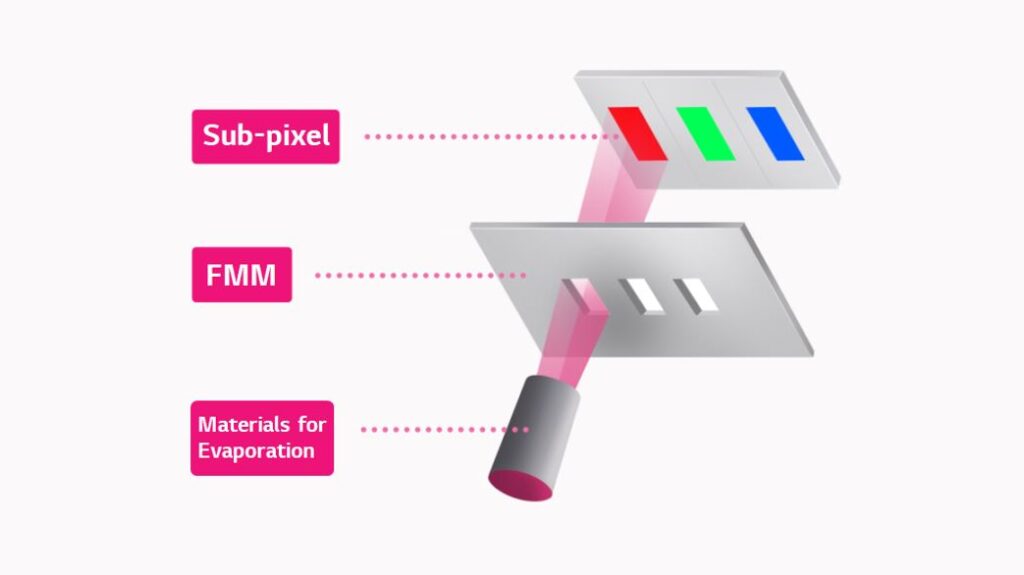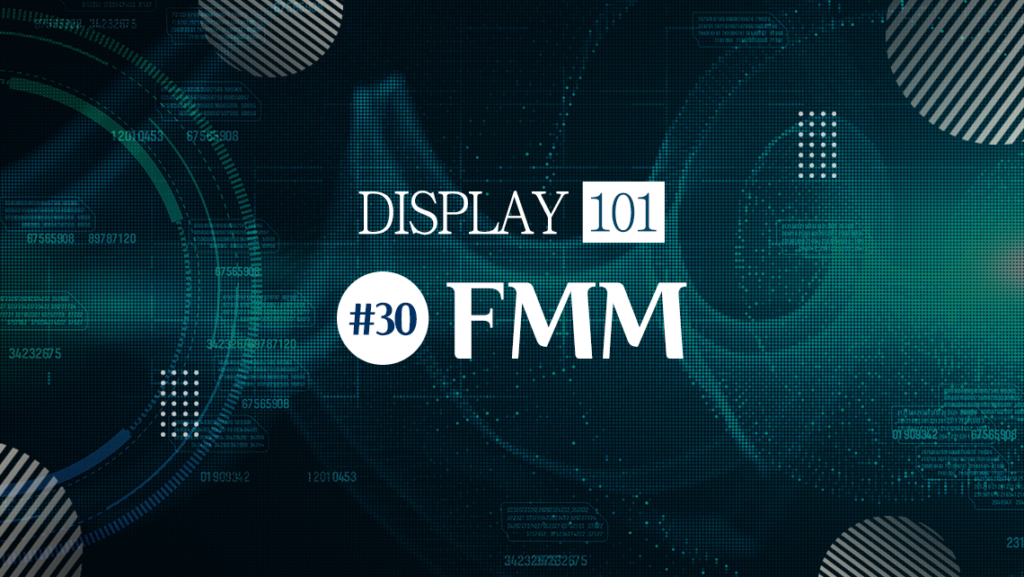
| FMM (Fine Metal Mask): A type of mask used in the OLED evaporation process to construct the emission material layer (EML) |
In our previous edition of Display 101, we discussed the ‘host’, a crucial substance that facilitates OLED’s emission of light. Today, we will focus on the FMM (Fine Metal Mask), a type of mask used during the OLED evaporation process to allow light-emitting organic materials to be deposited onto desired locations on the substrate.
Tiny and dense! How sub-pixels are deposited through FMM

As its name may suggest, FMM (Fine Metal Mask) refers to a thin metal plate with tiny holes. During the evaporation process, FMM helps to create sub-pixels that emit red (R), green (G), and blue (B). These sub-pixels come together to form a pixel, which is one of many from which an image is illuminated on a display.
When using FMM, organic material for the sub-pixels must be evaporated into an accurate location in alignment without any overlapping. Because of this, the process involves evaporating R sub-pixels first, followed by G sub-pixels, and B sub-pixels in order. This is especially challenging since it requires multiple processes and precise alignment of the FMM to prevent the sub-pixels from overlapping. Once the evaporation process of the sub-pixels is complete, the end result is the creation of the emissive layer (EML).









